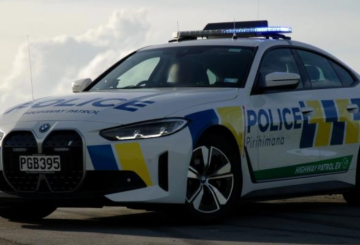Khi nào một ngôn ngữ bị tuyệt chủng và khi nào nó chỉ ngủ đông? Đây là một câu hỏi mà nhiều nhà ngôn ngữ học phải vật lộn. Những ngôn ngữ không còn người bản ngữ, những người đã học nó khi còn nhỏ, thường được coi là “đã chết”. Tuy nhiên, nó không phải lúc nào cũng đơn giản như vậy.
Lấy ví dụ ngôn ngữ Moriori từ quần đảo Chatham. Người bản ngữ cuối cùng của Ta rē Moriori qua đời vào đầu thế kỷ 20, nhưng ngôn ngữ này có một ghi chép lịch sử phong phú và chia sẻ nhiều điểm tương đồng với te reo Māori.
Điều này đã châm ngòi cho một dự án tại Đại học Auckland, hợp tác với Hokotehi Moriori Trust. Mục đích là phiên âm, dịch và hiểu đầy đủ tất cả các văn bản hiện có của ngôn ngữ Moriori. Mục đích là để có được những hiểu biết sâu sắc về các thuộc tính ngữ pháp của ngôn ngữ và cuối cùng tạo ra một ngữ pháp ngôn ngữ.
Người Moriori sống trên Rēkohu, hay quần đảo Chatham, cách bờ biển phía đông New Zealand khoảng 800 km. Họ có một nền văn hóa và ngôn ngữ độc đáo. Tuy nhiên, sự xuất hiện của người châu Âu vào những năm 1800, tiếp theo là hai bộ lạc Māori từ Aotearoa New Zealand, đã dẫn đến sự suy giảm nhanh chóng dân số Moriori và ngôn ngữ của họ.
Mặc dù vậy, ngôn ngữ Moriori đã được bảo tồn dưới nhiều hình thức khác nhau, khiến nó trở thành một ứng cử viên lý tưởng cho sự phục hưng ngôn ngữ. Điều này bao gồm một từ điển nhỏ được viết vào năm 1889, một bộ truyện ngắn, và một bản kiến nghị năm 1862 từ người Moriori gửi thống đốc New Zealand.
Hồi sinh một ngôn ngữ có vẻ đầy tham vọng, nhưng nó đã được thực hiện trước đây. Ngôn ngữ Wampanoag từ Massachusetts ở Hoa Kỳ đã mất người nói cuối cùng vào những năm 1890. Tuy nhiên, một kho lưu trữ đáng kể các tài liệu viết, bao gồm hồ sơ của chính phủ và các văn bản tôn giáo, đã có sẵn. Vào những năm 1990, một thành viên của cộng đồng Wampanoag bắt đầu phân tích các văn bản này và có thể xây dựng một từ điển và ngữ pháp. Đến năm 2014, đã có 50 trẻ em được coi là người bản ngữ thông thạo.
Đôi khi, “ngôn ngữ ngủ” là một thuật ngữ chính xác hơn cho một ngôn ngữ hiện không được truyền từ thế hệ này sang thế hệ khác. Ngôn ngữ hồi sinh chắc chắn sẽ hơi khác so với ngôn ngữ gốc. Nếu người lớn học ngôn ngữ Moriori từ các văn bản, họ có thể tiếp thu một số lượng lớn các từ và cấu trúc ngữ pháp. Một đứa trẻ học Moriori “mới” từ người lớn sau đó sẽ lấp đầy những khoảng trống theo bản năng – rất có thể là từ các ngôn ngữ khác mà chúng nghe, chẳng hạn như tiếng Māori hoặc tiếng Anh.
Vì vậy, Ta rē Moriori không thể nói là đã chết hoặc tuyệt chủng, bởi vì có khả năng thực sự nó có thể được nghe lại. Ngay cả bây giờ, các từ, cụm từ và bài hát của Moriori được sử dụng xung quanh quần đảo Chatham bởi chính Moriori. Tốt hơn là gọi nó là ngủ – và hy vọng chúng ta có thể đánh thức nó một ngày nào đó.





























































